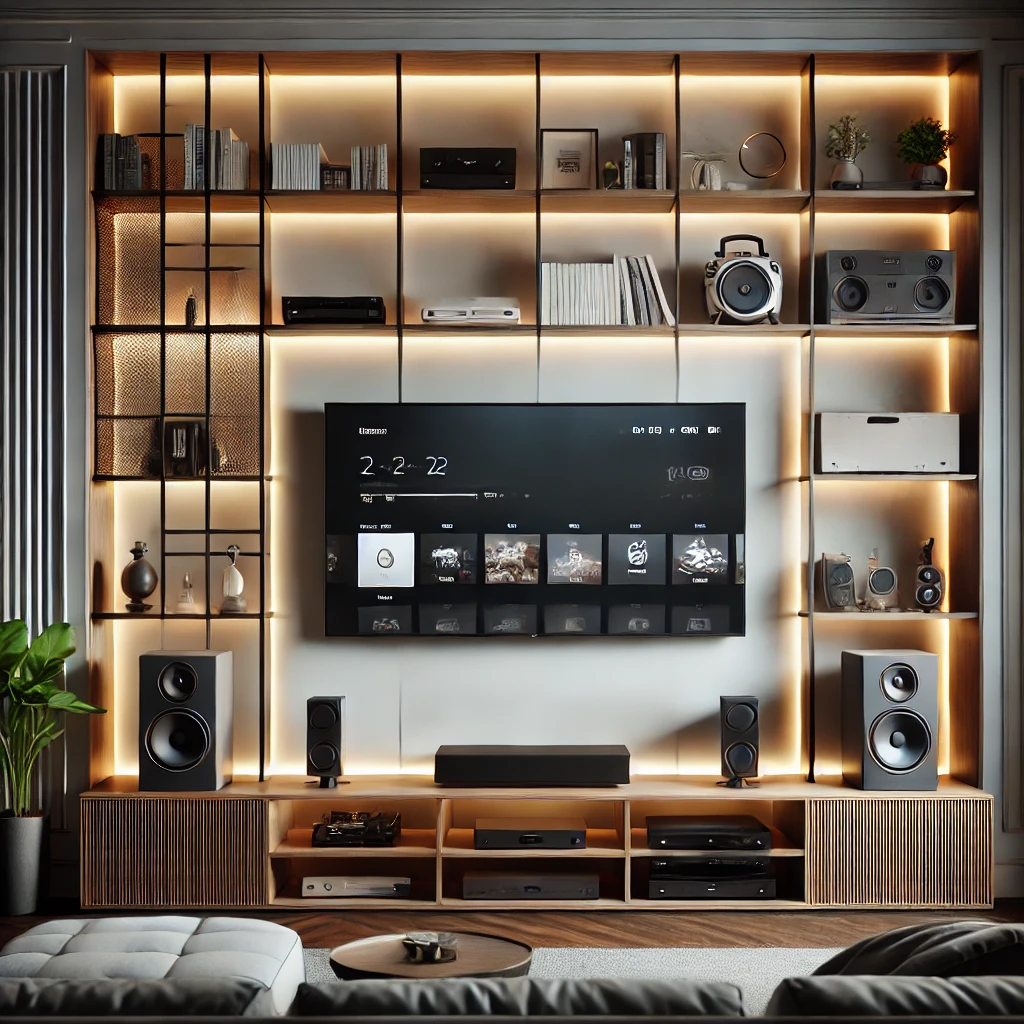
Key Takeaways
- Understand the fundamental components of a home theater setup for an enhanced viewing experience.
- Learn about audio options and screen types to suit different spaces and preferences.
- Gain insights on seating arrangements for maximum comfort and immersion.
- Discover the importance of room acoustics and lighting in a home theater setup.
Introduction to Home Theater Setup
The experience of a home theater is truly unique and incomparable. Whether you enjoy films, sports, or binge-watching shows, turning your area into a home theater is thrilling. Seeking advice from home theatre experts can offer helpful tips and direction for those eager to embark on this journey, ultimately saving time and money. Picture the happiness of having a room where you can enjoy blockbuster films with the same immersive sound quality and sharpness as you would at a movie theater, all in the cozy setting of your own home. The famous saying “Home is where the heart is” rings true when you have everything you need within reach.
Essential Components of a Home Theater
Achieving a fantastic home theater setup involves more than simply acquiring a television and a few speakers. Essential elements include a top-notch screen, an engaging audio setup, cozy chairs, and favorable sound quality. Furthermore, by including high-tech audio visual technology equipment like projectors and smart home integration, the experience can be taken to the next level. Selecting the appropriate parts may feel daunting with the wide range of choices; however, prioritizing quality over quantity usually provides a strong base. By setting up your area correctly, you can turn your location into a movie getaway that competes with a professional cinema. For example, a dependable receiver processes audio and video signals to ensure your media is reliably delivered to your display and sound system. As smart TVs become more common, adding streaming services to your setup can improve accessibility. Your selections should consider your available space and financial constraints while providing a memorable cinematic experience.
Understanding Audio Options
Sound systems are pivotal for an engaging home theater. The options vary from simple soundbars to complex surround sound setups. For smaller rooms, a high-quality soundbar may suffice; however, larger spaces benefit from a complete surround system. Considerations include room size, acoustic demands, and personal preferences. Surround sound systems, with configurations like 5.1 and 7.1, provide a more immersive experience. Additionally, wireless speaker systems are a great option to minimize clutter from cables.
Choosing the Right Screen
The centerpiece of any home theater is the screen. Options range from traditional LED TVs to advanced OLED and projection systems. Understanding the specific attributes of each type will guide your decision. LED screens are renowned for their brightness, which makes them an excellent choice for rooms with ambient light. On the other hand, OLED screens offer deeper blacks and higher contrast ratios, making them perfect for darker environments. For ultimate cinematic experiences, projectors stand out due to their extensive screen size capability. However, projectors do require controlled lighting conditions for optimal performance. Select a screen that aligns with your viewing habits and the ambient lighting of your theater space.
Optimizing Seating Arrangements
Seating arrangements can make or break the home theater experience. Prioritize comfort with recliners, gaming chairs, or sectional sofas to immerse you in viewing comfort. Ergonomically designed chairs can prevent fatigue, allowing for hours of entertainment without discomfort. When arranging your seating, consider sightlines to ensure everyone has a clear screen view. Also, consider speaker placement to provide balanced sound distribution throughout the space. Test the seating arrangement by positioning where you plan to sit most often, ensuring that visuals and audio are optimized for that spot.
The Role of Room Acoustics
The acoustics of your room profoundly affect sound quality. Hard surfaces can create an echo, distracting and diminishing the audio experience. Soft materials like carpets, curtains, and acoustic panels can absorb sound and prevent reverb, enhancing the clarity and richness of sound. Consider adding bass traps in the room’s corners to manage deep sound frequencies. This balance is critical to delivering clear, powerful audio and enhancing the viewing experience. If designing a theater from scratch, consult an acoustic expert to maximize sound quality and minimize post-construction adjustments.
Effective Lighting Tips
Lighting, often overlooked, is crucial in setting the right ambiance. Avoid overhead lights that can reflect off screens, disrupting the viewing experience. Instead, consider installing sconces or using lamps that emit soft, indirect light to create a warm and inviting atmosphere. For those who enjoy an authentic cinema feel, bias lighting installed behind the TV or projector screen is an excellent solution; it provides ambient illumination that reduces eye strain and improves perceived image contrast. These solutions contribute to a comfortable environment, preventing viewers from having to strain their eyes while sustaining the cinematic vibe of your home theater.
Final Thoughts
Crafting the ideal home theater may seem daunting, but with informed choices and thoughtful design, you can create a stunning multimedia oasis at home. By focusing on the elements discussed, from the audio system to room acoustics, you can ensure your new setup provides countless evenings of entertainment and enjoyment. Remember, this space is about personal fulfillment, so tailor it to your preferences and enjoy each transformation phase. Here’s to many memorable movie nights spent enjoying your movies, games, or shows in the comfort of your cinema!
